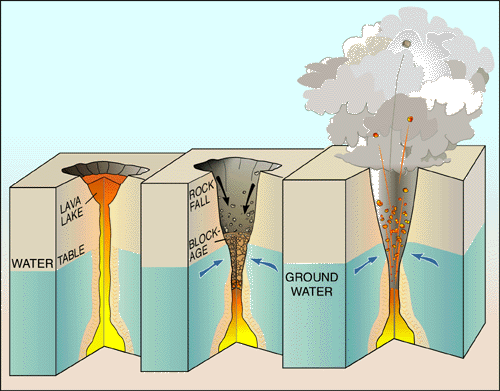Here’s a summary and primary sources collected by HVO geologist Don Swanson on a 1790 explosive episode of Kilauea.
Also see USGS factsheet, “Explosive Eruptions at Kilauea, Hawai’i?” compiled prior to the 2018 eruptions. Diagram from this page:

The factsheet notes that “Many of Kilauea’s pre-1924 explosive eruptions that produced significant ash deposits probably happened when the volcano’s summit crater was so deep that its floor was below the water table, letting ground water seep in to form a lake.”
If I’m understanding correctly, they’re saying that bigger explosions may happen when there’s a lake of water, i.e. more fuel to create steam.
Edited to add: HVO’s page outlining the history of Kilauea Caldera also goes into past explosive episodes. Final paragraph:
“Having pieced together the recent geologic past of Kīlauea, scientists conclude that the volcano will eventually return to a long period of mostly explosive activity, just as it did around 1500 CE. This future explosive period will probably accompany a significant decrease in the magma supply rate and be initiated by collapse of a new caldera to the depth of the water table, which today is about 615 m (2015 ft) below the present high point on the caldera rim. For now, effusive eruptions dominate Kīlauea.”
Note: that’s a new caldera, the much larger basin containing Halema’uma’u crater within it, and the vent that’s erupting ash explosions right now was a small lava lake covering only part of the floor of Halema’uma’u. Orders of magnitude different in terms of size. Also, changing the location of the active vent doesn’t mean the magma supply inside is dropping.